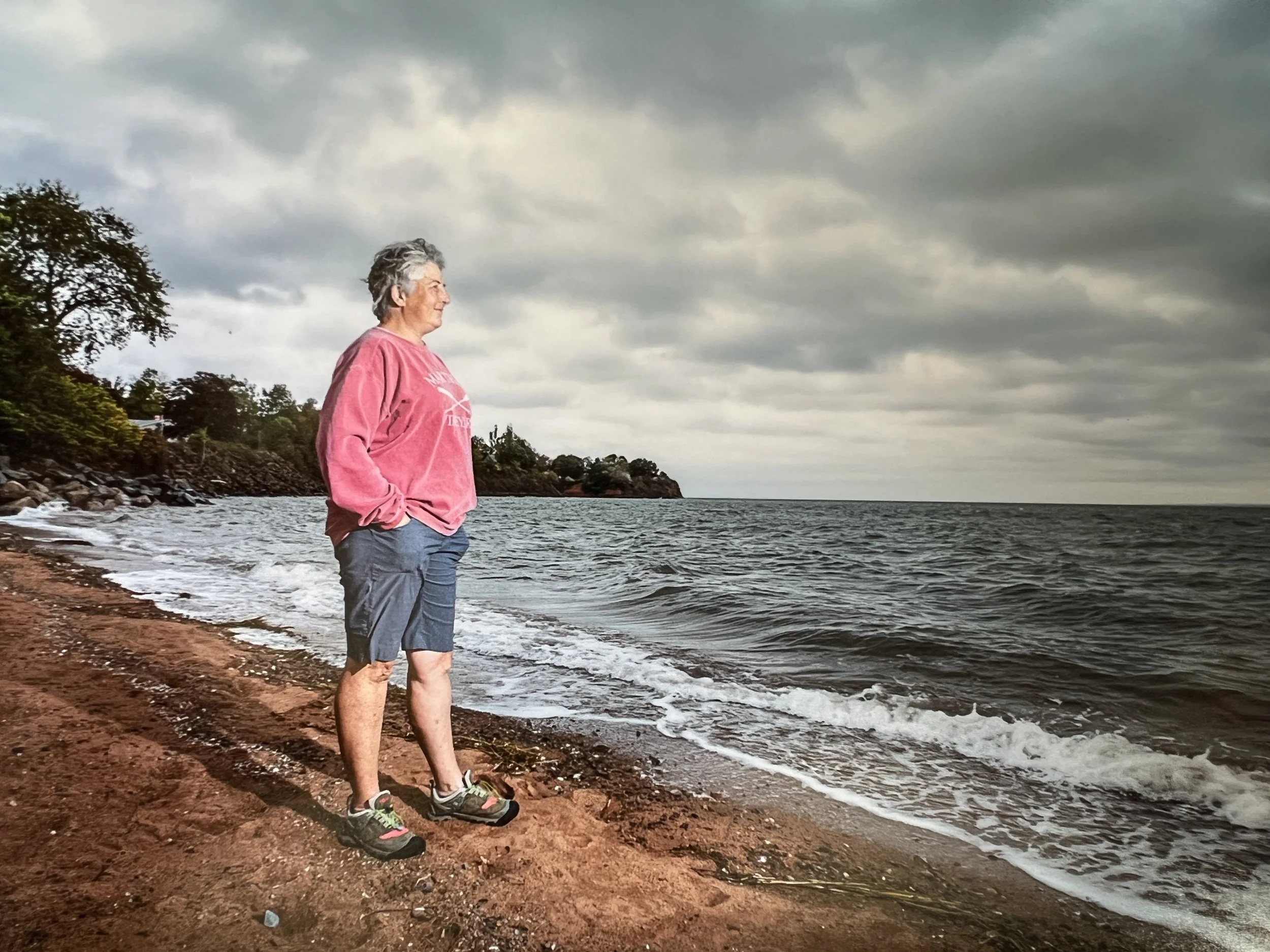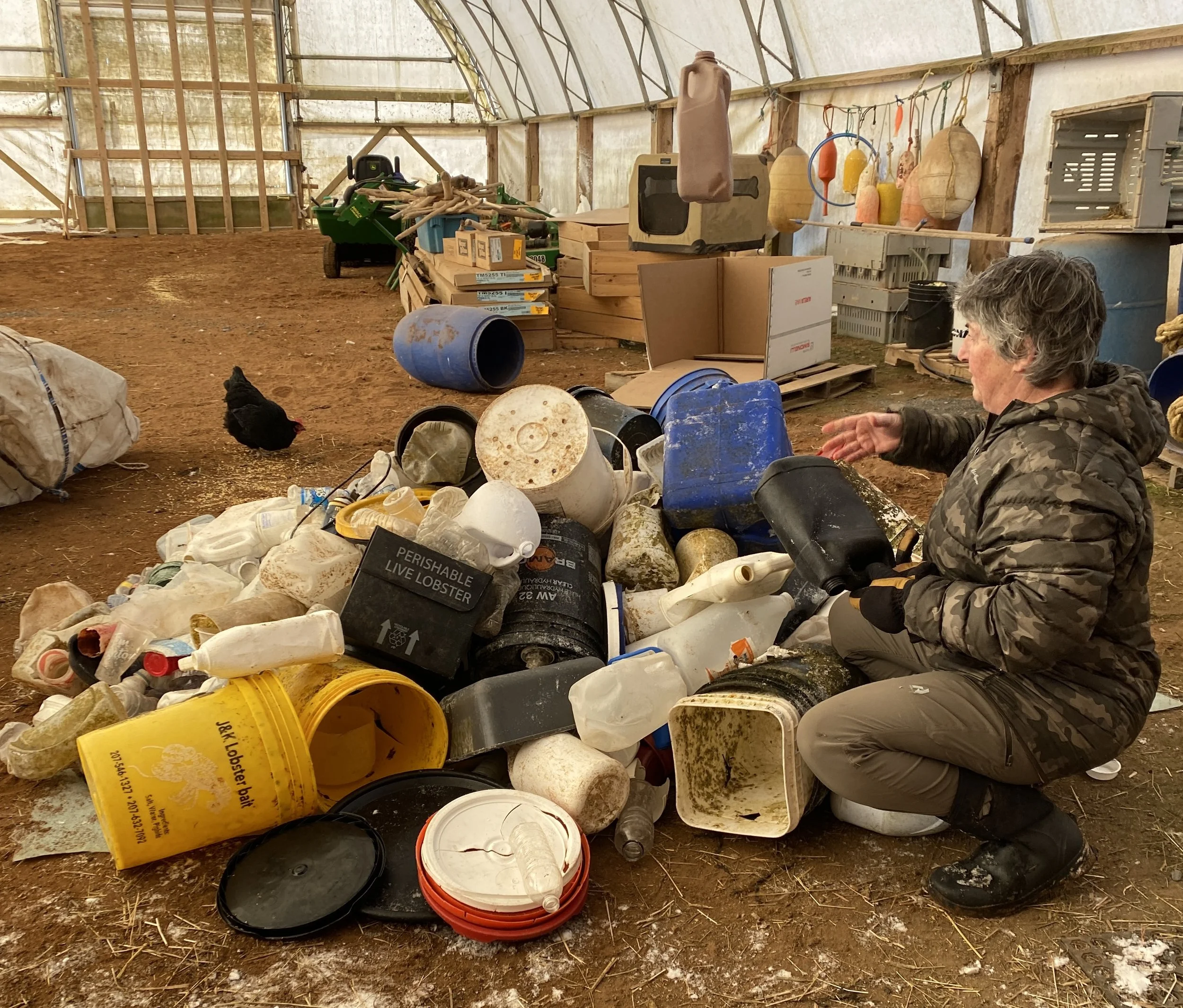For this Nova Scotian, every day is Earth Day
She grew up in Yarmouth, N.S., and loves Nova Scotia’s beaches. Currently, Karen Jenner lives in the Annapolis Valley, just a short drive from the Bay of Fundy. When she noticed the amount of plastic and other garbage washing ashore with each tide, she decided to act.
These days, the beach clean-ups that started as an easy activity to do with her young kids, have grown into environmental advocacy that is turning heads on social media and making news headlines.
Passion project
Now that her children are older, Karen does her seaside garbage collection alone. Her beach clean-ups have morphed from a group pastime into a solo passion – one that takes up a lot of Karen’s time and energy.
Over the last five years, she has collected approximately 16,783 kilograms (37,000 pounds) of garbage from a 25-kilometre stretch of the Bay of Fundy shoreline. Karen visits seven or eight locations four to five days a week, including Hall’s Harbour, Huntington Point and Baxters Harbour.
Spending time outdoors has always been a priority for her. “I just like being outside. I always have,” Karen said. “I know it’s far better for me to be out doing what I am than watching Netflix all day.” It makes Karen feel better both physically and emotionally knowing that she is giving back.
Online awareness
Even though Karen prefers to work by herself, she took the cause public. She has found a groundswell of support online via her Facebook page, Nova Scotia Beach Garbage Awareness.
“I was amazed at the quantities [of garbage on beaches] and thought others would be as well. That’s why I started the page.”
Karen posts pictures of what she collects. It shocks people to see the sheer volume of waste on some of Nova Scotia’s beaches.
Startling statistics
Karen sorts every piece of garbage that she picks up and brings home. It’s a massive undertaking.
Pieces of plastic, rope, bottle caps, syringes, lobster (rubber) bands, shotgun shells, tampon applicators, jar lids and plastic packing straps used in shipping; the list of garbage she collects from the shore is endless.
Karen counts some items and weighs others. She said if she counted every piece of garbage she has collected since 2018, the number would be as high as two million.
For example, by early 2023, Karen had picked up 61,000 packing straps and 9,979 kilograms (22,000 pounds) of rope. Her local waste management group routinely comes to her house and trucks the shoreline garbage away for processing.
Nurturing nature
Despite Karen’s herculean efforts, a staggering volume of waste continues to wash up on beaches across the province. Since the garbage keeps coming, Karen keeps working. She urges others to do what they can to keep Nova Scotia’s beaches cleaner, while taking advantage of a feel-good way to add more movement into the day!
Whether you start a community beach-clean up, or simply pick up pieces of garbage whenever you see them, every effort pays off. The environment ultimately benefits, as do all the plants and animals living near or under the sea. One less piece of rope in the water or on a beach means birds and other wildlife are less likely to become entangled.
Personal payoff
Not only are there environmental benefits to her volunteerism, Karen said her time spent near the ocean also helps her.
“I also go for the peace and quiet. It’s good for your mind. We have a son with special needs who is almost 30 [years old]. [Walking the beach] is a great stress reliever. When you’re there, there’s no pressure,” said Karen, who added that beach walks can happen year-round, not just in warmer weather.
Being seaside is soothing, but the shoreline Karen walks is rocky, not sandy, so it is challenging terrain. She has disc degeneration in her back, plus osteoarthritis. Karen lives with some level of pain, but it doesn’t stop her from focusing on her passion project and making movement a priority.
“I’d be sore if I were home. This is a different type of discomfort. You have to set it aside and keep moving. You’ve got to be outside doing everything you can when you can.”
Doing what you can when you can, like Karen does, shows that even a one-person movement can make a big difference.




